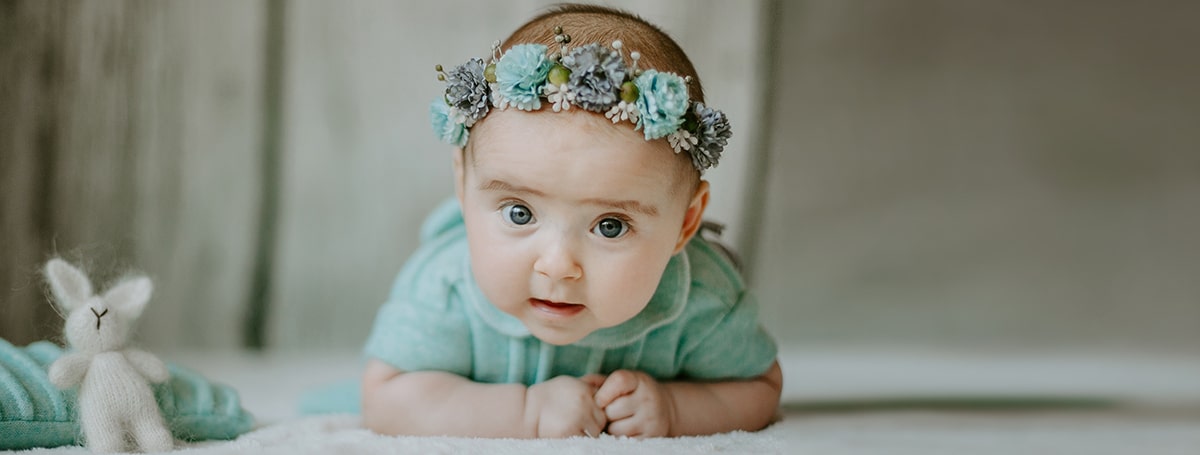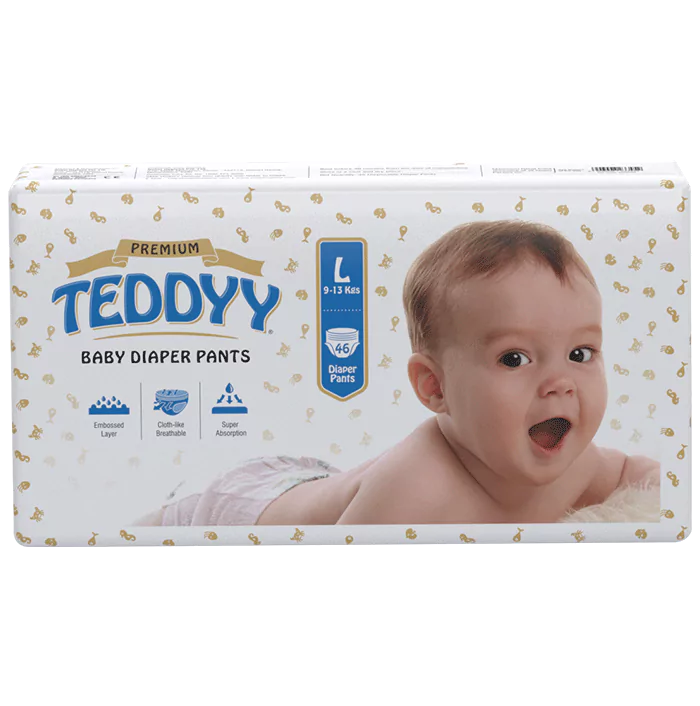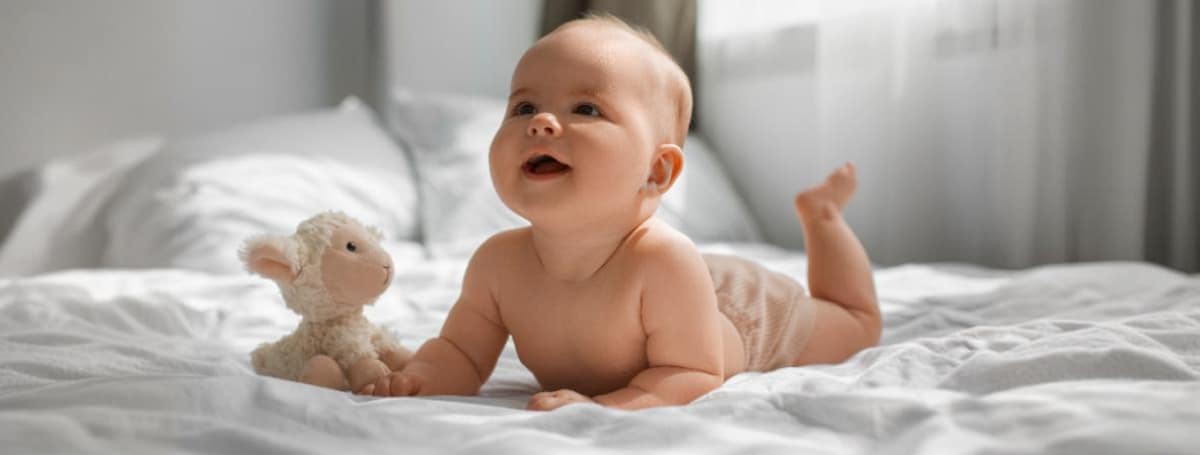Is Your 3-Month-Old Hitting These Exciting Milestones?
The first few months with your baby have been a whirlwind of cuddles, late-night feedings, and endless diaper changes. But now, at three months, things are starting to change—you’re seeing more smiles, hearing adorable coos, and may have noticed tiny but significant developments every day. This is an exciting phase where your baby begins to explore the world in new ways. Most babies at this age are able to hold their head up for short periods, follow objects with their eyes, and respond to familiar voices. Wondering what 3 month developmental milestones to expect? From improved head control to early signs of communication, let’s explore all the amazing things your little one might be doing at three months old.
3 Month Baby Milestones: Weight and Length
One of the most noticeable 3 month milestones is your baby’s rapid growth. By this age, your little one has likely gained significant weight since birth, with some even doubling their birth weight. However, the general expectation is that babies double their birth weight by around 4 months and triple it by their first birthday. If you’re wondering whether your baby’s growth is on track, your pediatrician will monitor their progress during routine checkups. Tracking your baby’s weight at three months is important, as it helps assess their growth pattern and ensures they are following standardized growth charts. On average, a 3-month-old baby’s weight and length fall within these ranges:
- Average weight for baby boys: 6.40 kg
- Average length for baby boys: 24 inches
- Average weight for baby girls: 5.80 kg
- Average length for baby girls: 23.5 inches
Remember, every baby grows at their own pace. Genetics, feeding patterns, and overall health all play a role in weight and length variations. As long as your baby is happy, active, and steadily growing, they are likely thriving just as they should be!
3 Month Old Baby Milestones: Movement
At three months old, your baby is making big strides in physical development, gaining more control over their movements and building strength in their tiny muscles. This is a crucial stage in baby development at 3 months, where coordination, balance, and mobility begin to take shape.
5.1 Head Control
By this age, your baby’s neck strength is improving, which is a key milestone. You may notice your baby can hold their head steady for longer periods and make more controlled head movements. During tummy time, many babies can lift their heads and even their head and chest off the ground, supporting themselves with their arms. This shows growing strength in their neck and upper body. It’s also common to observe babies turning their heads from side to side, demonstrating increased control over their heads and neck muscles.
5.2 Hand Use and Coordination
At three months, your baby’s hands are becoming more active. You might see your baby’s hands open and close, come together, and even swipe at toys. These actions are early signs of developing hand-eye coordination and grasping abilities. Your baby may also briefly grab objects and bring their hands to their mouth, further practicing these important motor skills.
Arm and Leg Strength
With growing strength in their core and limbs, your baby will start showing better control over their arms. They may swipe at toys or wave their arms more intentionally. Leg movements also become more pronounced—expect plenty of playful kicks when they are lying on their back or tummy. If you hold them in a supported standing position, they may even push down with their feet, showing early signs of leg strength.
Rolling Over Attempts
Some babies may surprise their parents by rolling from tummy to back by the end of this month, although this milestone is typically achieved closer to five or six months. Encouraging tummy time can help strengthen the muscles needed for rolling, sitting, and crawling in the coming months.
Our Products
3 Month Baby Milestones: Cognitive and Sensory Development
At three months old, your baby’s brain is working hard to process the world around them. This stage of 3 month developmental milestones is marked by growing curiosity, improved sensory awareness, early communication skills, and rapid cognitive development.
Increased Awareness and Recognition
Your baby is becoming more observant and responsive to their surroundings. They can now recognise familiar faces and objects, even from a distance. Their ability to focus has improved, allowing them to watch faces intently and track moving objects with their eyes. This means they’ll follow you around the room with their gaze and show excitement when they see you approach.
Hearing
At this stage, your baby’s hearing is more refined, and they are actively responding to sounds. You may notice them turning their head toward voices, music, or other noises. They might smile when they hear your voice. Talking, singing, and responding to their coos will encourage their growing communication skills.
Hand-eye Coordination and Sensory Exploration
Your baby’s sense of touch is becoming more sensitive, helping them interact with their environment. They are starting to coordinate their hands and eyes better, meaning they may attempt to reach for objects, swipe at toys, or study their own fingers with fascination. Providing textured toys or soft rattles can help stimulate their sense of touch and improve their motor skills.
3 Month Milestones: Social and Emotional Development
At three months, your baby’s personality is starting to shine! This stage of 3 month developmental milestones is filled with joyful interactions, social smiles, and growing emotional awareness. Babies use cry and crying as their main way to communicate hunger, discomfort, or tiredness, but as they develop, their cries may decrease as they find new ways to express themselves. Your little one is becoming more expressive and beginning to form deeper connections with you and others. Baby loves to hear familiar voices and interact with caregivers, responding eagerly to talking, singing, and playful sounds. Tracking your baby’s progress in social and emotional milestones is important to ensure healthy development.
Growing Social Awareness
By now, your baby can recognise familiar faces and voices, especially those of parents and caregivers. While they may smile at strangers, they show a stronger attachment to loved ones. They can identify people not just by sight but also by sound and even smell. This recognition helps them feel secure, and they may become upset when playtime or interaction stops.
Expressing Emotions
Your baby is now more communicative, using facial expressions, body movements, and sounds to express happiness, excitement, or frustration. You may notice them responding to your emotions—smiling when you smile or reacting differently to various tones of voice. They might even laugh for the first time, turning everyday moments into heartwarming memories.
Early Communication and Babbling
Language development is also progressing rapidly. Your baby’s coos are evolving into more complex sounds, including vowel-consonant combinations like “ah-goo” or “muh-muh.” They may attempt to imitate the sounds and lip movements they see, which is a significant step toward speech. Responding to their sounds and engaging in “conversations” can encourage further development.
Our Products
3 Month Baby Milestones: Sleep and Feeding Patterns
As your baby reaches the 3 month developmental milestones, their sleep and feeding routines start becoming more predictable. At this stage, you may notice your baby is sleeping for longer stretches at night, and their overall sleeping patterns begin to settle into a routine. While every baby is different, many parents notice more regularity in feeding intervals and longer sleep stretches at night. During these months your baby is growing rapidly, so expect changes in alertness and sleep needs, especially as they approach 3 months old.
Feeding Patterns
At this stage, your baby is growing and able to consume more milk per feeding, leading to longer gaps between meals. Breastfed babies may now feed every 4 to 5 hours, compared to the more frequent 3- to 4-hour intervals of the earlier months. However, it’s still important to nurse on demand, as your baby may occasionally want to eat ahead of schedule. If you’re breastfeeding, you might also find it helpful to experiment with different nursing positions, especially if dealing with clogged ducts or nipple soreness.
Bottle-fed babies, whether on formula or expressed breast milk, will typically drink 110 to 170 grams per feeding at similar intervals of every 4 to 5 hours. If you are combining breastfeeding with bottle-feeding, the quantity per feeding remains roughly the same.
Sleep Patterns
Your little one now needs about 16 hours of sleep per day, usually divided into about 10 hours at night and 6 hours spread across three naps during the day. Many 3-month-olds start developing a more predictable sleep rhythm, with some even managing a solid 6-hour stretch of uninterrupted sleep at night. However, sleep patterns can still vary depending on your baby’s individual needs and your family’s schedule.
While true sleep training isn’t recommended at this age, you can start laying the groundwork for good sleep habits. One of the best strategies is putting your baby to bed when they are drowsy but still awake, allowing them to learn how to self-soothe and fall asleep independently. Watching for tired cues—such as rubbing eyes, fussiness, or yawning—can help prevent overtiredness. Establishing a consistent bedtime routine with familiar rituals, like gentle rocking, a warm bath, or soft lullabies, can also signal to your baby that it’s time to sleep.
A comfortable and breathable diaper is essential to ensure uninterrupted sleep. Teddyy Baby Diapers, with their soft elastic waistband, breathable fabric, and skin-friendly materials, provide superior comfort and leak protection—perfect for delicate skin. Their snug fit allows your baby to move freely while keeping them dry throughout the night, helping both you and your little one enjoy more restful sleep.
3 Month Old Baby Milestones: Developmental Health Watch
Every infant grows and develops at their own rate, and slight variations are completely normal. However, there are certain milestones that most children are expected to reach by a certain age, and missing these may be warning signs of developmental delays. If your little one isn’t meeting key milestones of baby development at 3 months, it’s always best to check in with your paediatrician. Early intervention can make a big difference in supporting healthy growth for infants and children. Keep in mind that babies reach milestones at different times, and those born prematurely may reach certain milestones later than full-term infants–careful monitoring is important. Sometimes, it may take a few seconds to observe a response or action, so be patient when watching for these signs.
Consult a doctor if your baby:
- Doesn’t seem to notice their own hands by two months
- Doesn’t respond to loud noises
- Doesn’t smile when hearing a familiar voice by two months
- Struggles to follow moving objects with their eyes by two to three months
- Frequently crosses their eyes (occasional crossing is normal but should improve)
- Has difficulty moving one or both eyes in all directions
- Shows little interest in new faces or appears frightened by new surroundings
- Doesn’t smile at people by three months
- Cannot hold their head up well at three months
- Doesn’t reach for or attempt to grasp toys by three to four months
- Doesn’t grasp or hold objects by three months
- Still has the tonic neck reflex (where the baby’s head turns to one side and the arm on that side straightens) beyond four to five months
- Doesn’t push down with their legs when feet touch a firm surface by four months
- Doesn’t babble by three to four months
- Doesn’t bring objects to their mouth by four months
- Doesn’t attempt to imitate sounds by four months
Conclusion
Watching your little one grow and reach new milestones at three months is an incredible journey filled with smiles, giggles, and tiny but meaningful achievements. From lifting their head to responding to your voice, every moment is a sign of their blossoming personality and development. While each baby follows their own unique path, understanding 3 month developmental milestones can help you celebrate their progress and offer gentle support along the way. If you ever have concerns about your baby’s 3 month milestones, trust your instincts and reach out to your pediatrician. Most of all, cherish these precious days—before you know it, your little one will be onto their next big adventure.
Faq's
1. What are the key milestones for a 3-month-old baby?
By 3 months, babies may lift their heads steadily, smile socially, follow moving objects, recognize faces, and start making vowel-like cooing sounds.
2. How much should a 3-month-old baby grow in weight and height?
Most 3-month-old babies gain about 1–2 lbs and grow 1–1.5 inches since their 2-month checkup. Growth rates vary based on genetics and feeding.
3. How much sleep does a 3-month-old need?
A 3-month-old usually sleeps 14–17 hours in 24 hours, with longer night stretches of 5–6 hours, and 3–4 naps during the day.
4. Can a 3-month-old baby recognize voices and faces?
Yes. At this stage, babies can clearly recognize parents and familiar caregivers, respond to voices, and smile in response to interaction.
5. What activities help a 3-month-old’s development?
Tummy time, gentle play with rattles, talking, singing, and showing high-contrast books or toys support motor, sensory, and cognitive growth.
6. When should I consult a doctor about my 3-month-old’s development?
See a doctor if your baby has difficulty holding their head, isn’t making sounds, doesn’t respond to visual or auditory cues, or shows feeding issues.





